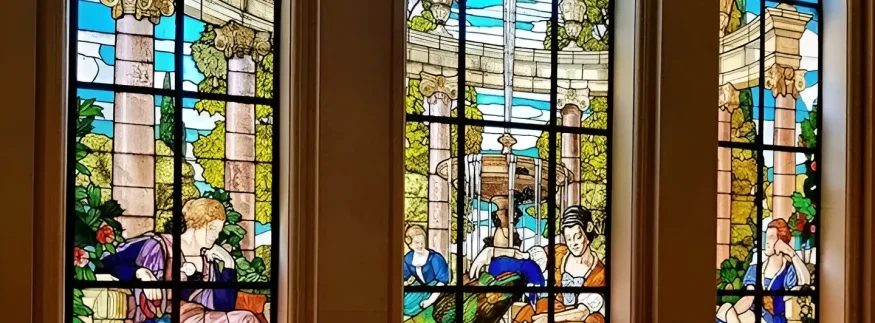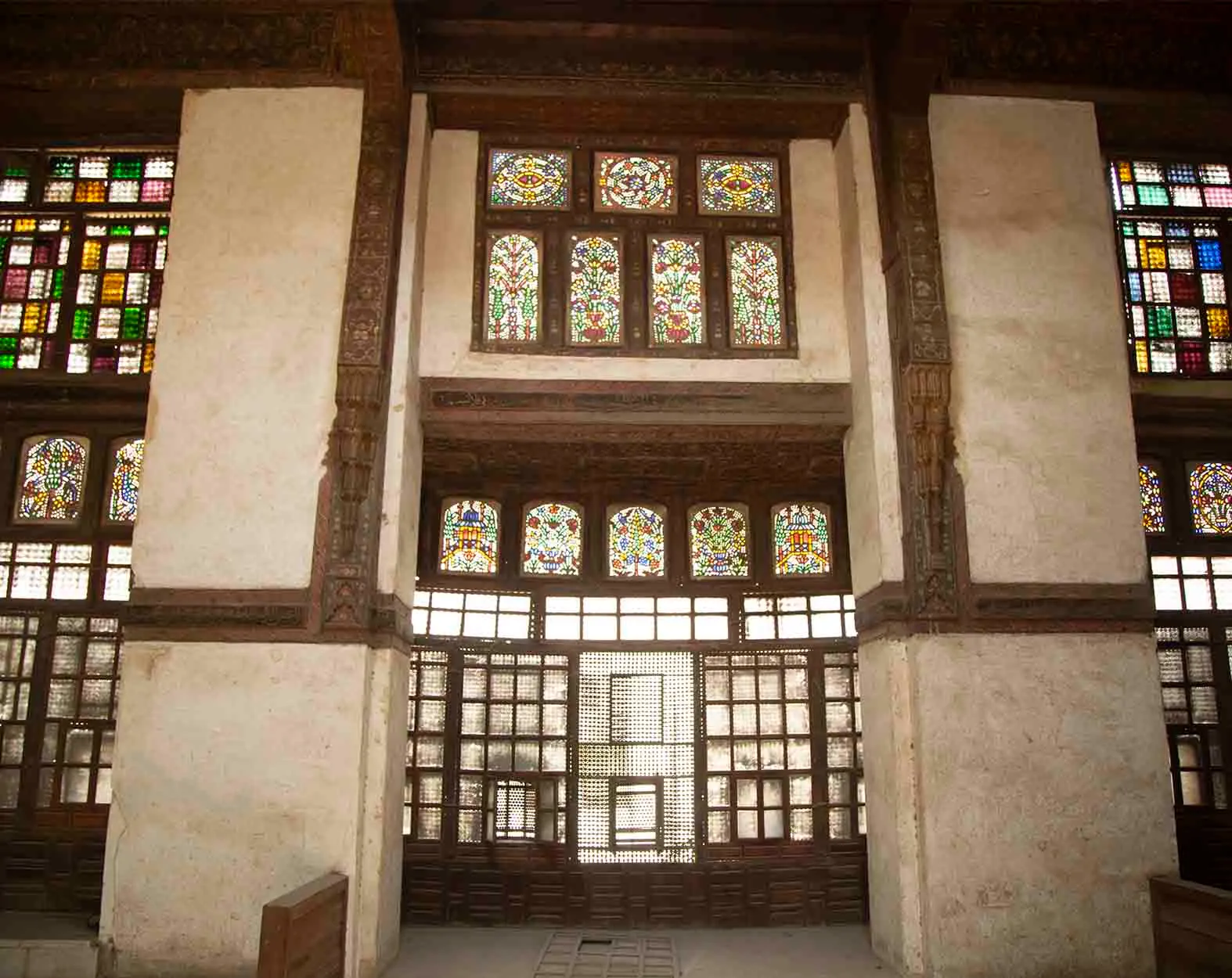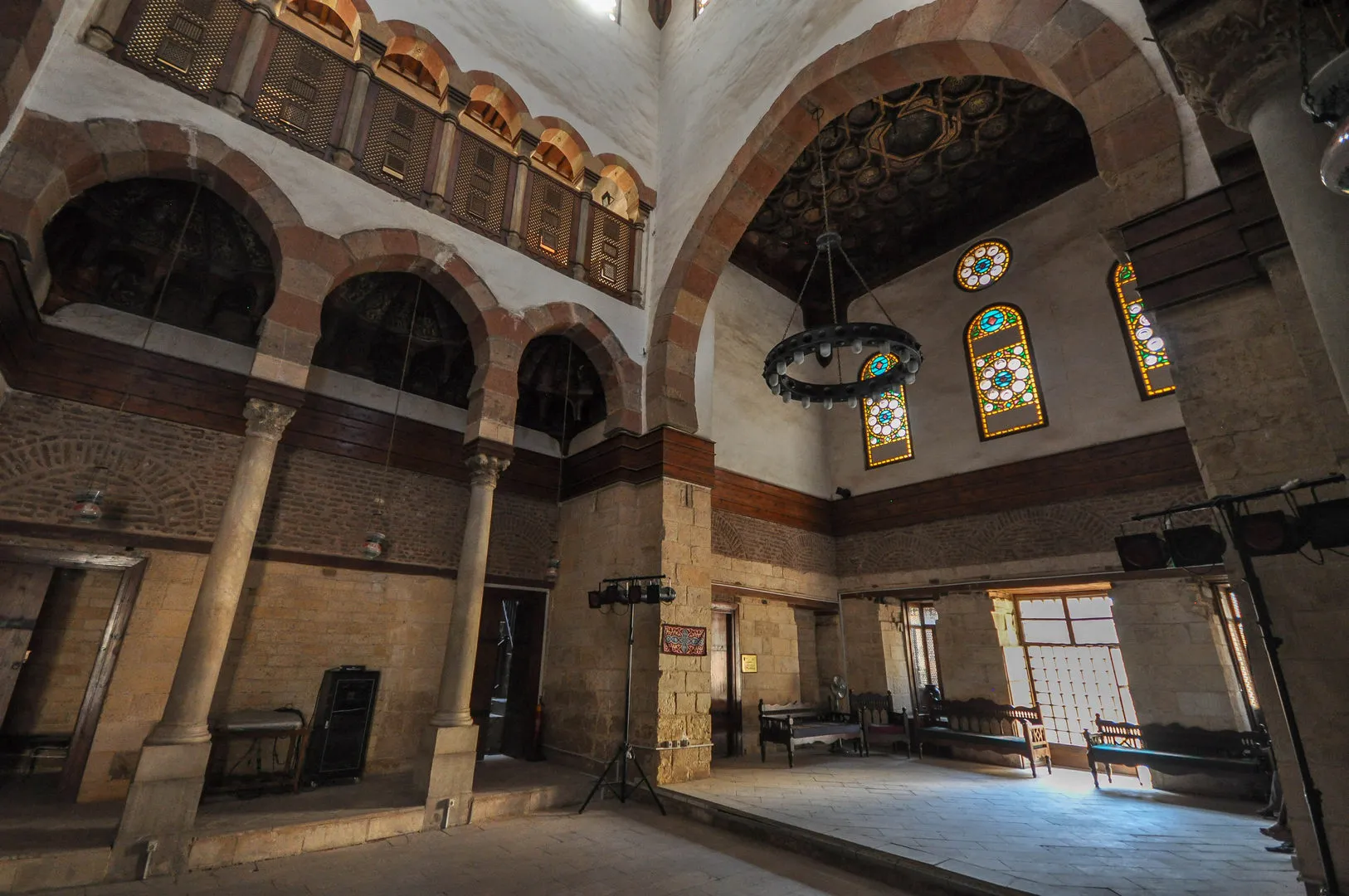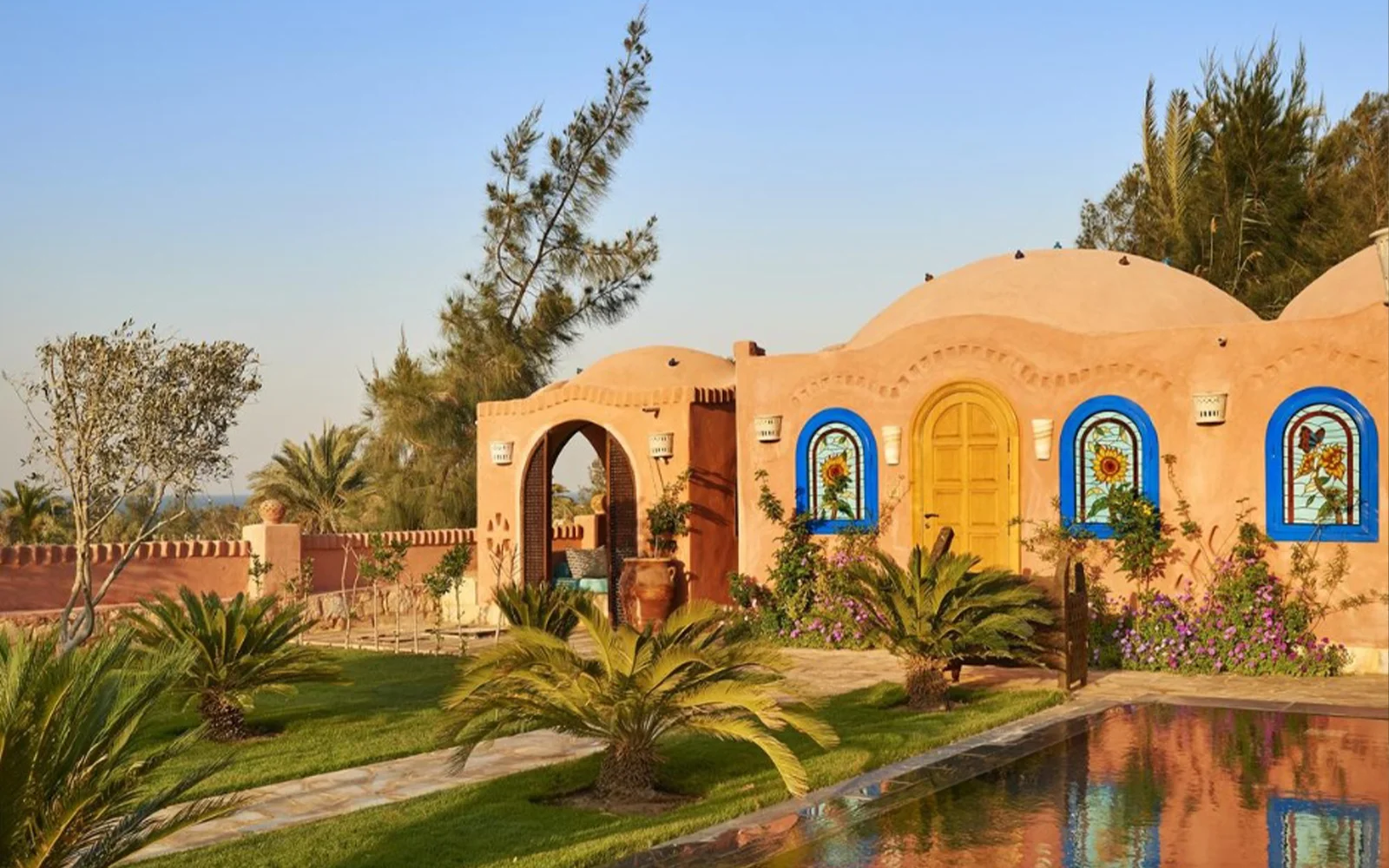Through the Stained Glass: The Different Portrays of Coloured Stained Glass in Egyptian Architecture
architecture Stained Glass
Safy Allam
Image via pinterest
Coloured stained glass has long been a captivating architectural element, transforming spaces into vibrant showcases of artistry and light. This ancient craft has evolved dramatically in Egypt, seamlessly blending its historical roots with modern design. From the spiritual serenity of mosques and churches to the grandeur of historical landmarks and the elegance of palaces, museums and houses, stained glass serves not just as decoration but as a narrative tool that conveys stories and emotions as well as a meditating source with its vibrant colours and dynamic shapes.
Let’s explore the rich history of coloured stained glass in Egypt and discover how this stunning element continues to shape today’s architectural field throughout different functional buildings.
Qalawun Mosque
Image via islamicarchitectural
The Complex of Sultan Qalawun, a remarkable medieval monument in Cairo, showcases magnificent architecture and serves as a spiritual refuge. Its mosque features stunning stained glass windows adorned with intricate geometric patterns, reflecting the essence of Islamic artistry. This design choice respects the prohibition against portraying human forms, favouring simplified designs that enhance the atmosphere.
Studies in psychology reveal that the geometric shapes and the vibrant play of light created by the stained glass can induce feelings of peace and tranquillity in worshippers. Each shape has a distinct impact on human emotions, fostering a serene environment ideal for reflection and spiritual connection.
St. George Church
Image via egypttours
The Church of St. George, nestled in Coptic Cairo, is one of Egypt’s few round churches, built atop an ancient Roman tower. Established in the 10th century, the church’s rich interior captivates visitors, with its stained glass windows adorning the clerestory and dome corners. These vibrant, soft-coloured windows catch the sunlight, casting colourful beams that shimmer across the dark woodwork, transforming the space into a radiant sanctuary.
The interplay of light and colour creates a serene and awe-inspiring atmosphere, making the Church of St. George not just a place of worship, but a breathtaking experience that touches the soul.
Aisha Fahmy Palace
Image via arabcont
Aisha Fahmy Palace, built in 1907 by Khedive Abbas Helmy and designed by Italian architect Antonio Lasciac, is a stunning example of artistic grandeur, featuring lavish interiors adorned with frescoes, golden Japanese lettering, and exquisite silk walls. Among its most captivating elements are the intricate stained glass windows, particularly the triple-arched masterpiece overlooking the staircase. These windows are not just decorative; they transform the space by casting vibrant colours that evoke tranquillity and inspiration.
In this case, the stained glass narrates a unique story of cultural fusion with its portrayed imagery, blending local artistic traditions with European influences, reflecting Egypt’s rich architectural heritage and the sophistication of the upper class during that era.
Bait Al-Razzaz

Image via aldarbalahmar
The stained glass patterns at Bait Al Razzaz, a stunning example of Mamluk and Ottoman architecture in Cairo, weave together a rich cultural narrative. These intricate designs serve as more than mere decoration; they embody philosophical concepts of infinity, unity, and the divine, reflecting the era’s beliefs. Dating back to the 15th century during Sultan Qaitbay’s reign, the Mamluk influence is evident in the use of complex geometric shapes and floral motifs, symbolising God’s infinite nature and fostering a serene atmosphere for reflection and prayer.
The vibrant colours of deep red, representing life and passion; bright yellow, symbolising fleeting joy; and calming green, denoting willpower, create a dynamic interplay of light, enhancing the spiritual ambience and inviting visitors to experience the beauty and depth of this architectural gem.
Lazib Inn
Image via lazibinn
Lazib Inn Resort & Spa, a luxurious boutique hotel in Fayoum’s Tunis Village, was founded by Olivier and Nanette Masson to create a serene retreat surrounded by the area’s stunning natural beauty. The stained glass in the resort reflects this vision, with patterns that mainly feature sunflowers set against a clear blue sky. These sunflowers, symbols of longevity, happiness, and wealth, complement the calming blue tones representing peace and lasting traditions.
Together, the stained glass elements embody the essence of Fayoum’s meditative and grounded lifestyle, offering guests a sense of tranquillity and connection to nature.
recommended
 Shopping
Shopping
Perfectly Wrapped for the Season: 8 Online Egyptian Bag Brands for Christmas Gifting
Alamki Canella +9 Sights & Travel
Sights & Travel






